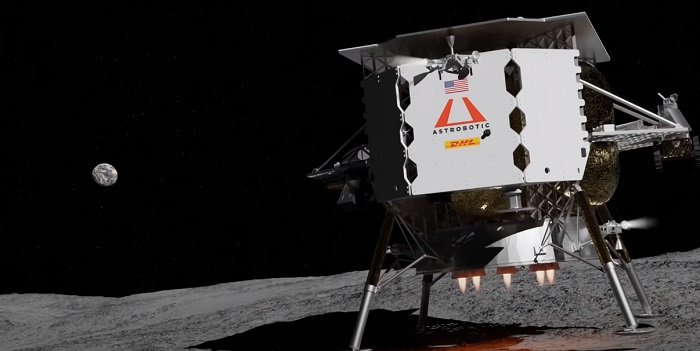Peregrine: Vulcan Rocket’s Inaugural Flight to Carry First Privately-Built US Moon Lander
For the first time in over five decades, a commercially constructed American lander, Peregrine, was launched to the moon early Monday.
This small robotic probe carries 20 experiments and international payloads, including five NASA science instruments and a sensor valued at $108 million.
Additionally, it includes university experiments, Mexican and US micro rovers, artwork, compact time capsules, a bitcoin, and even a small collection of human “cremains” provided by two companies offering memorial flights to space.
While the Peregrine lander, constructed by Pittsburgh-based Astrobotic, was the mission’s highlight, the launch was equally significant — marking the inaugural flight of United Launch Alliance’s new Vulcan rocket, a heavy-lift booster replacing the Atlas and Delta family of launchers.
Following an unexpectedly smooth countdown, the Vulcan’s two BE-4 engines, burning methane, along with twin solid-propellant strap-on boosters, ignited at 2:18 a.m. EST.
The rocket, standing at 198 feet tall and weighing 1.5 million pounds, gracefully ascended from launch complex 41 at the Cape Canaveral Space Force Station, propelled by two million pounds of thrust.
Peregrine Lander Set for Lunar Journey: 18 Days in Earth Orbit

The mission plan involved placing the Peregrine lander into a highly elliptical Earth orbit, where it is anticipated to spend approximately 18 days before initiating a trajectory towards the moon.
Following a period of lingering in a low-altitude circular orbit, the spacecraft is scheduled to commence its descent on February 23, aiming for a landing site near the intriguing volcanic feature known as the Gruithuisen Domes.
In addition to introducing a robust new rocket into the U.S. launch capabilities, this event marked the inaugural launch in a series of privately funded moon missions facilitated by NASA’s program designed to encourage the development of commercial lunar transportation and surface delivery services.
